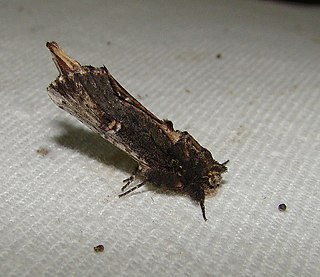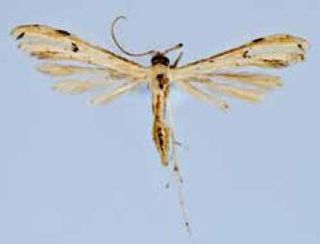
The Oomycetes, or Oomycota, form a distinct phylogenetic lineage of fungus-like eukaryotic microorganisms within the Stramenopiles. They are filamentous and heterotrophic, and can reproduce both sexually and asexually. Sexual reproduction of an oospore is the result of contact between hyphae of male antheridia and female oogonia; these spores can overwinter and are known as resting spores. Asexual reproduction involves the formation of chlamydospores and sporangia, producing motile zoospores. Oomycetes occupy both saprophytic and pathogenic lifestyles, and include some of the most notorious pathogens of plants, causing devastating diseases such as late blight of potato and sudden oak death. One oomycete, the mycoparasite Pythium oligandrum, is used for biocontrol, attacking plant pathogenic fungi. The oomycetes are also often referred to as water molds, although the water-preferring nature which led to that name is not true of most species, which are terrestrial pathogens.

Ipomoea aquatica, widely known as water spinach, is a semi-aquatic, tropical plant grown as a vegetable for its tender shoots. I. aquatica is generally believed to have been first domesticated in Southeast Asia. It is widely cultivated in Southeast Asia, East Asia, and South Asia. It grows abundantly near waterways and requires little to no care.

Ipomoea lobata, the fire vine, firecracker vine or Spanish flag, is a species of flowering plant in the family Convolvulaceae, native to Mexico and Brazil.

Albugo candida, commonly known as white rust or white blister rust, is an obligate plant pathogen in the family Albuginaceae that infects Brassicaceae species. It has a relatively smaller genome than other oomycetes.

Hyaloperonospora brassicae, in the family Peronosporaceae, is a plant pathogen. It causes downy mildew of species of Brassica, Raphanus, Sinapis and probably other genera within the Brassicaceae. In the past, the cause of downy mildew in any plant in the family Brassicaceae was considered to be a single species Peronospora parasitica. However, this has recently been shown to be a complex of species with narrower host ranges, now classified in the genus Hyaloperonospora, for example Hyaloperonospora parasitica on the weed Capsella bursa-pastoris. From the perspective of plant pathology, Hyaloperonospora brassicae is now the name of the most important pathogen in this complex, attacking the major agricultural and horticultural Brassica species. Other significant Brassicaceous hosts are attacked by different species in the complex, e.g. horseradish by Hyaloperonospora cochleariae, wallflower by Hyaloperonospora cheiranthi.
Albugo occidentalis, the causal agent of spinach white rust, is an oomycete plant pathogen, although some discussions still treat it as a fungal organism. Albugo occidentalis is one of the most important spinach diseases in North America, found throughout the United States east of the rocky mountains.

Pustula tragopogonis, the goatsbeard white rust, is an oomycete plant pathogen unrelated to fungal organisms.

Ipomoea indica is a species of flowering plant in the family Convolvulaceae, known by several common names, including blue morning glory, oceanblue morning glory, koali awa, and blue dawn flower. It bears heart-shaped or three-lobed leaves and purple or blue funnel-shaped flowers 6–8 cm (2–3 in) in diameter, from spring to autumn. The flowers produced by the plant are hermaphroditic. This plant has gained the Royal Horticultural Society's Award of Garden Merit.

Albugo is a genus of plant-parasitic oomycetes. Those are not true fungi (Eumycota), although many discussions of this organism still treat it as a fungus. The taxonomy of this genus is incomplete, but several species are plant pathogens. Albugo is one of three genera currently described in the family Albuginaceae, the taxonomy of many species is still in flux.

Albuginaceae is a family of oomycetes.
Wilsoniana bliti, the white rust, is a type of oomycete pathogen of genus Wilsoniana that affects the tissues of plants. In particular, this white rust is found on Amaranth, beets and lambs quarters. Many discussions of this white rust treat it as a type of fungus.
Acrocercops ipomoeae is a moth of the family Gracillariidae. It is known from Cuba.
White rust is a disease in plants caused by the oomycete Albugo candida or one of its close relatives. Plants susceptible to this disease generally include members of the Brassica family. White rust has been known to cause agricultural losses in fields cultivating members of this family including broccoli, cauliflower, and Indian mustard. Despite the name, it is not considered a true rust.

Coleosporium is a genus of rust fungi belonging to the family Coleosporiaceae. This diverse genus encompasses approximately 100 distinct species. The lifecycle of these fungi involves aecial stages, during which they parasitize various species of Pinus, while their telial occur on a number of angiosperms.

Schizura ipomoeae, the morning-glory prominent moth or false unicorn caterpillar, is a moth of the family Notodontidae. The species was first described by Edward Doubleday in 1841. It is found in the United States and southern Canada.

Adaina ipomoeae is a moth of the family Pterophoridae. It is found in Cuba, Jamaica, Puerto Rico, Guadeloupe, the Dominican Republic, Grenada, and Florida.
Albugo laibachii is a species of oomycete, whose genome has recently (2011) been sequenced. It is a plant pathogen of Arabidopsis thaliana. Albugo laibachii also causes the host plant to become more susceptible to other parasites, when it normally would be more resistant, wearing down the host plant's immune system.
Periglandula ipomoeae is a fungus of the genus Periglandula in the family Clavicipitaceae. It lives symbiotically with the plant Ipomoea asarifolia as an epibiont.










